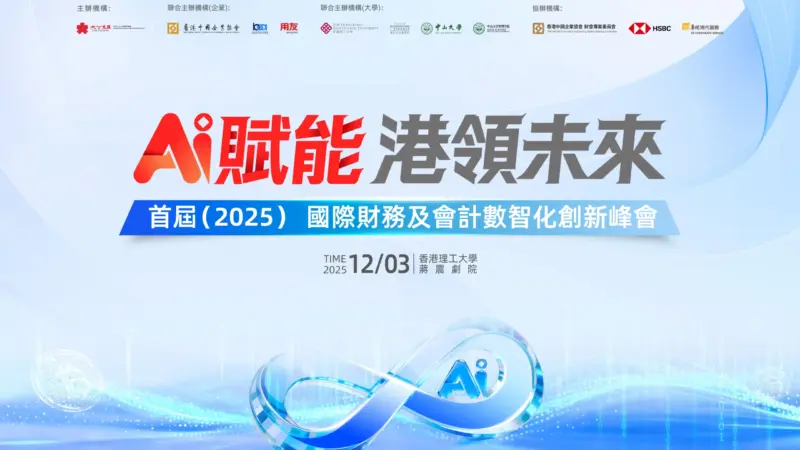Source: Entrepreneur Magazine 「企業家雜志」
“Go global or be out” has become a rallying cry for Chinese companies expanding worldwide.
Once reliant mainly on cost-effectiveness to reach international markets, “Made in China” is now giving way to companies expanding globally through brand, technology, and management strength. From BYD setting up factories in Europe to Mixue becoming a common sight on Southeast Asian streets, Chinese enterprises are undergoing a profound shift from “going out” to “going deep.” Global expansion is no longer just about product flow—it represents the deep integration of industrial, value, and innovation chains worldwide. It is a “great migration of the full industrial chain,” marked by overseas production, local R&D, and global operations.

In this process, global operational capability has become essential for enterprises to truly establish themselves in international markets. Xu Yang, Senior Vice President of Yonyou Network and President of the Enterprise BG, emphasizes that companies must develop global operational capabilities with a worldwide vision, and digital intelligence is the core enabler. It serves not only as a “connector” in international expansion but also as the “neural network” behind global operations. How to use digital intelligence to achieve cross-border collaboration, local adaptation, and global control has become a central challenge every globalizing enterprise must address.We are compelled to ask: As companies enter deeper waters in global expansion, what role does digital intelligence play? How can it help enterprises evolve from “going out” to “truly going far”?
Global Expansion Is Becoming More Complex
Since the start of reform and opening-up, China has long been in a phase dominated by “bringing in” international capital and technology through measures like relaxed foreign investment access and pilot free trade zones. The launch of the “Belt and Road” initiative in 2013 marked China’s entry into a new stage of “two-way opening.” According to UNCTAD data, in 2023, China ranked second in actual utilized foreign investment and was among the top three in outbound foreign direct investment.A deeper change is occurring in the mode and essence of how companies expand abroad.In the past, global expansion resembled “remote trade”—companies used cross-border e-commerce or local distributors to sell “Made in China” products worldwide, focusing mainly on sales channel expansion. Today, expansion is more like a “full transplant.” An increasing number of companies are choosing to build factories overseas, set up R&D centers, and establish supply chain nodes, transforming from “Chinese companies” into “global companies.”Embedding a complete operational system—including R&D, production, supply chain, HR, and financial management—into vastly different societies is not only an upgrade in expansion model but also a shift in the nature of challenges. Companies must build comprehensive global operational capabilities. Xu Yang stresses, “In the past, an IT system that could handle cross-border payments might have been sufficient. Today, companies need a ‘global neural network’ that can synchronize data between headquarters in China, factories in Mexico, R&D centers in Hungary, and branches in Southeast Asia.”Take Rifeng Group, a leading Chinese innovative plastic piping company with operations in over 180 countries and regions, as an example. With rapid overseas growth, it faced challenges such as multi-timezone, multi-language, and multi-currency management, as well as global precision pricing.An integrated global operations system became essential. By implementing YonSuite, Rifeng achieved unified management of finance, supply chain, and marketing, reducing management risks by 40%. It also built a globally collaborative, intelligent warehousing, and 360° supplier management system, comprehensively enhancing global operational and risk control capabilities.
Three Hidden Barriers for Chinese Companies Expanding Globally
For companies expanding overseas, visible costs such as land, tariffs, labor, and loan interest rates are like icebergs clearly visible on the surface. However, the real determinants of success are often the complex hidden risks beneath—difficult to quantify, easily overlooked, yet highly destructive.Hidden Barrier 1: Cultural DifferencesCultural differences are often mentioned but also frequently oversimplified. Cultural conflicts extend beyond language and customs to affect business rules, communication habits, and trust mechanisms.In some markets, business relationships rely on long-term offline interaction and personal connections, with contracts merely as a starting point. Overemphasizing “efficiency” in contracts and data may be perceived as coldness, hindering deep trust. In other markets, strict adherence to terms and data is expected, and relationship-dependent approaches may be seen as unprofessional.Even within a single country, the codes for building trust are not uniform. Xu Yang notes, “One country does not mean only ‘one culture and business style.’” For example, the cultural differences between East Malaysia and West Malaysia are comparable to those between East China and Northeast China. Southern Vietnam (Ho Chi Minh City) and Northern Vietnam (Hanoi) also have distinct business styles. A company successful in West Malaysia may struggle badly if applying the same strategy in East Malaysia. “Treating the country as the smallest management unit while ignoring regional diversity is a common and serious misstep among expanding enterprises.”Hidden Barrier 2: Dynamic Policy Environment—The Challenge of Sustained ComplianceThe highly dynamic and uncertain policy environments overseas are extremely difficult to manage systematically. Changes in tax systems, new labor regulations, upgraded environmental laws, and the introduction of digital taxes often occur frequently and are subject to interpretation. Especially in some developing countries, variations in policy enforcement, transition arrangements, and regional differences can lead to additional compliance costs.Entrepreneurs long accustomed to domestic policies may develop “inertial perceptions,” unconsciously applying domestic logic to predict overseas policies or conducting overseas research from a static perspective—a case of “marking the boat to find the sword.”In reality, overseas compliance is more like a “protracted battle” than a one-time task. Internal teams alone are often ill-equipped to handle it. Companies need teams with “capillary-level” understanding of local cultures to establish ongoing policy tracking and early warning mechanisms.Hidden Barrier 3: Perception Gaps in Digital IntelligenceMisunderstandings about digital intelligence are the most contemporary and hidden trap. Although digital intelligence is increasingly critical in global expansion, many companies still see it merely as locally deployable software or a secondary “information cost.” Some companies, when planning overseas strategies, still treat digital intelligence investment as a compressible “cost” rather than a vital “strategic investment.” This cognitive lag can create significant operational risks.For example, if a company uses one system at its domestic headquarters, another at its Hungarian factory, and a different one at its Mexican branch, with barriers to data exchange and delays in process coordination, “global operations” would be fragmented.Headquarters would never have real-time, accurate insight into global operations, forcing decisions to be based on guesses. True global digital intelligence requires integrated domestic and overseas operations, with systems covering everything from global supply chain coordination to unified fund management.
Building a Systematic Global Expansion Strategy
How can companies reinforce their “hulls” against these hidden barriers?The most feasible approach is to choose partners with global service capabilities. The choice of partner affects not only how fast a company can go but also how steadily and how far. Xu Yang states that an ideal partner should have three qualities:
- First, deep cross-cultural understanding and global operational experience to warn of cultural and policy risks.
- Second, a mature and reliable ecosystem of local partners, including legal, tax, and HR services, to provide “last-mile” support and turn plans into reality.
- Third, a solid technological foundation with a powerful system platform covering multi-regional business scenarios globally.
More critically, companies must elevate digital intelligence to a core strategy led by top management. The chairman and CEO should become the chief architects and drivers of digitalization. This is crucial for future global competitiveness. Only with strategic prioritization can comprehensive integration across countries, businesses, and systems be achieved, avoiding new data silos and organizational barriers.The globalization of Chinese companies has entered deep waters. This is a comprehensive stress test—not only of product competitiveness but also of organizational learning ability, cultural inclusivity, and strategic foresight.Visible icebergs can be broken with capital and resources. Hidden undercurrents, however, require deeper wisdom to navigate—genuine respect for cultures, ongoing learning about policies, and elevating digital intelligence to a strategic imperative for global survival.When Chinese companies expand abroad not only with products and capital but also with insights into hidden challenges, respect for rules, and wisdom in integration, they can truly cross the threshold and evolve from “Chinese giants” into “global enterprises” respected by the world. The blue ocean will ultimately belong to those wise vessels that can both look up at the stars and navigate the hidden currents.







